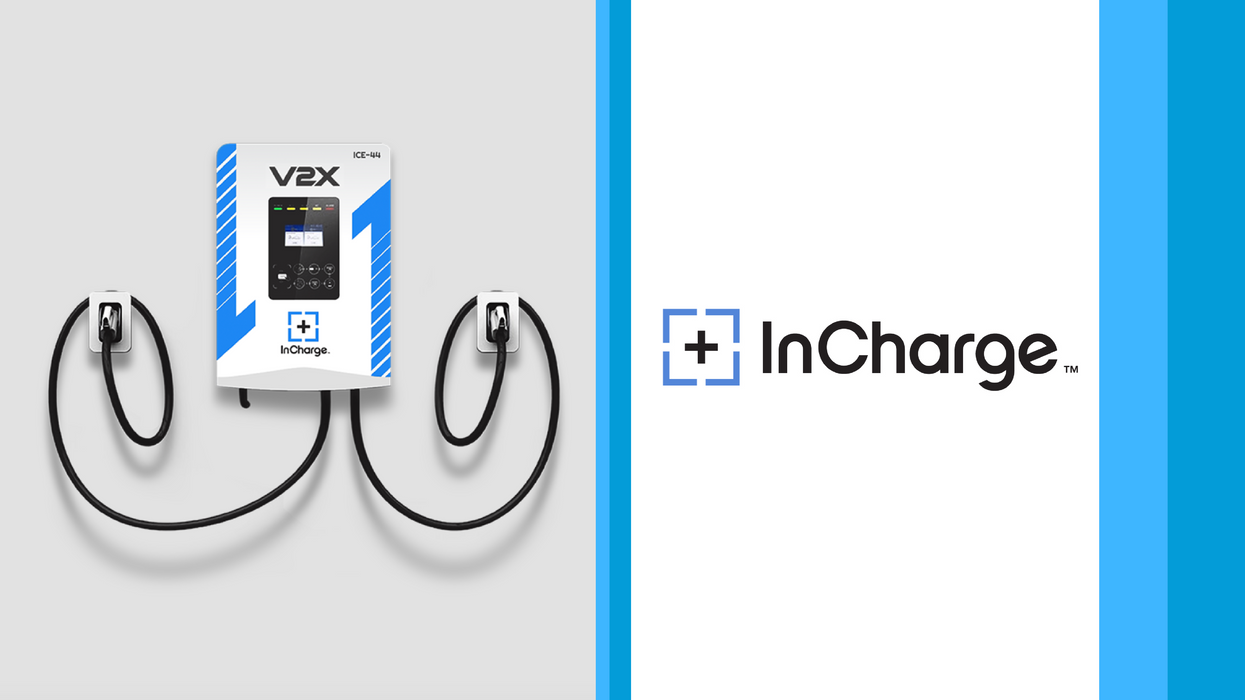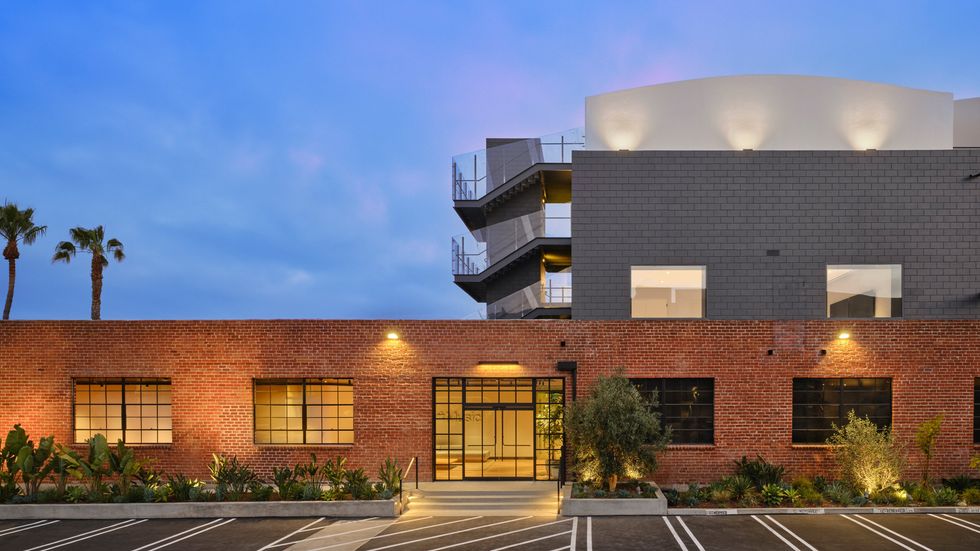InCharge Introduces V2X Technology: Turning EVs into Mobile Power Stations
David Shultz reports on clean technology and electric vehicles, among other industries, for dot.LA. His writing has appeared in The Atlantic, Outside, Nautilus and many other publications.

Last week at the Advanced Clean Transportation Expo, Santa Monica-based InCharge unveiled a new family of bidirectional electric vehicle chargers.
While a new charger might not have been the most jaw dropping tech unveiled at the expo, bidirectional charging–especially right now–offers the kind of cost saving solutions that should be extremely attractive to anybody that owns electric buses, delivery vans, or even tractor trailers in significant numbers. Basically, any fleet owner looking to save some money during their transition from diesel to battery would benefit from these chargers.
Bidirectional charging, also called V2X technology, does what its name suggests. Instead of electricity always flowing from the grid into the vehicle, InCharge’s newest products also allow electrons to flow from the vehicle’s battery back into the grid–or anywhere else. This means that EVs basically become large, roving batteries that can be used to power virtually anything from the electricity in the depot, the grid, or other vehicles.
InCharge’s new product comes in three different sizes, 22kW, 44kW, and 66kW. All of which are considered relatively slow charging speeds compared to many direct current fast chargers that you might see on the side of the highway that are intended to charge your EV back to full capacity as quickly as possible. But speed is not the name of the game in bidirectional charging and isn’t much of a concern at depots, where vehicles usually sit idle overnight and have plenty of time to charge.
Instead, the technology is intended to help fleet owners save money. Especially right now, with the transition to electrification still in its relative infancy, the country’s energy grid in places like California is often saturated with renewable energy during the middle of the day when the sun is brightest and solar production is at maximum. During those hours energy is cheap and clean, but in the evening, when demand spikes and solar production begins to wane, electricity becomes dramatically more expensive and more reliant on fossil fuels.
According to InCharge CEO Terry O’Day the fleets his company is selling to are using the new tech for three different but closely-related applications.
The first is shaving the peak off of the demand curve. By enabling fleets to use electricity stored in their vehicle batteries to charge when energy demand is at its highest and most expensive, fleet owners can simple avoid charging when rates are at their highest. In the same vein, fleet owners can also hold onto their electrons until demand is high, and then sell the energy back to the grid for a profit. This is the same principle underlying the new residential rooftop solar rules outlined in NEM 3.0, which basically requires new solar installs to come with a battery in order to be profitable. But in the case of fleets, the scale is vastly magnified due to the size and number of the batteries in the system.
Finally, the tech can also be used to help fleet owners avoid drawing too much energy from the grid all at once: Right now, in California and many other places, grid operators charge a tariff for companies that use too much energy at any one time. Electricity may cost 30 cents per kilowatt hour, as long as you’re drawing less than 200 kWs at a time, for instance. But as soon as you exceed that level of power, companies may start charging more. Bidirectional charging can add the flexibility needed to stay below certain tariff levels–a concept known as tariff shifting.
All of this equates to cost savings for fleet owners. And while these savings will likely pale in comparison to the cost of buying a new fleet of EVs and installing the charging tech, the savings scale with how large the fleet is and can significantly ease the pain. O’Day can’t publicly divulge yet who the major customers have been for the new chargers, but he says InCharge has a pipeline of order numbering in the thousands, spanning from delivery companies to school districts.
Like much of the electrification industry, one of the biggest bottlenecks for InCharge is waiting for utility companies to install grid upgrades that allow the chargers to actually connect to the larger grid. “It's taking as much as 24 months to get utility upgrades at a lot of sites,” says O’Day. Against that background, planning remains a major challenge for fleet owners, and despite progress in standardizing the tech, interoperability between charger and vehicle can remain an issue. InCharge is O’Day’s fifth EV startup. “Each time I start one of these companies, I think it's you know, we're gonna be making cookies. Turns out, we're making snowflakes pretty much.”
While InCharge offers a turnkey solution and will work with clients to understand the needs and requirements of every custom install, the market remains somewhat disjointed. “Different providers in the value chain are all trying to come together and make their stuff work together. They may choose you for a slice of it, your brother for another slice of it, your sister for a different one, and then all the siblings have to work together,” O’Day says. “That can get complicated.”
The industry has already seen that drama play out in the light duty public charging sector, where every charger brand has its own apps, its own payment procedure, and its own charger standards. All of this has led to an unreliable charging experience for EV owners—a study from April 2022, for instance, found that less than three quarters of the chargers in its survey were actually operational.
For fleets, where vehicle uptime equals revenue, this is simply not an option, and the commercial transportation industry is eager to avoid the same pitfalls.
Up to this point, Tesla is the only non commercial charging company that has managed to deliver a solid product. The EV giant is famous for the quality of its supercharger network, and to O’Day, the success isn’t particularly surprising. “For Tesla is it's an integrated, fully interoperable charger and vehicle where Tesla builds the software, they own the sites and they [control the payment processing.]”
While O’Day doesn’t want to compare InCharge to Tesla, he says that sort of unified turnkey approach will be vital for the commercial transportation industry as it works to eliminate diesel completely by 2036, as per the California Air Resources Board’s recent ruling. Getting there will be a Herculean effort, but bidirectional charging is almost guaranteed to be crucial in making the transition economically viable.
David Shultz reports on clean technology and electric vehicles, among other industries, for dot.LA. His writing has appeared in The Atlantic, Outside, Nautilus and many other publications.





 Image Source: Tinder
Image Source: Tinder Image Source: Apple
Image Source: Apple